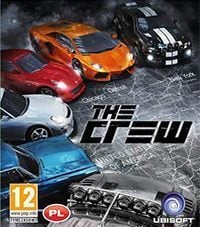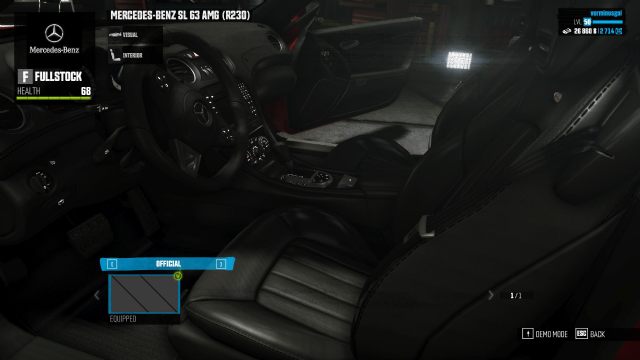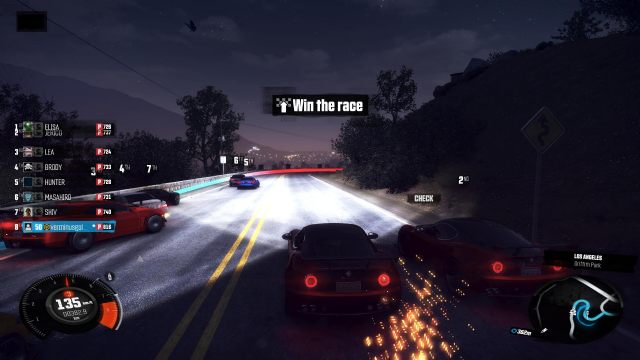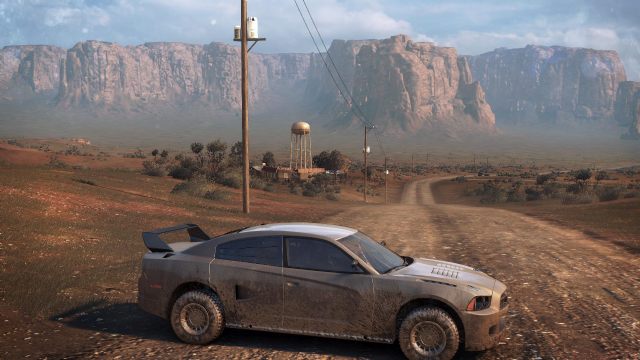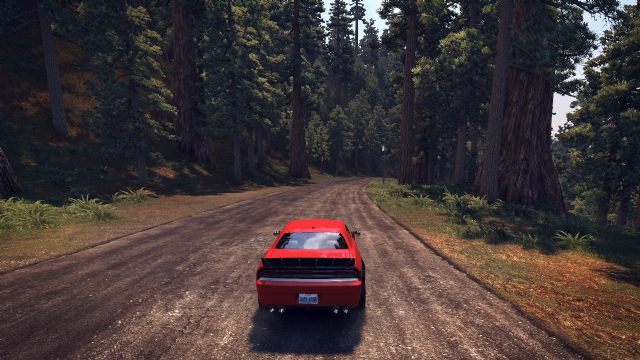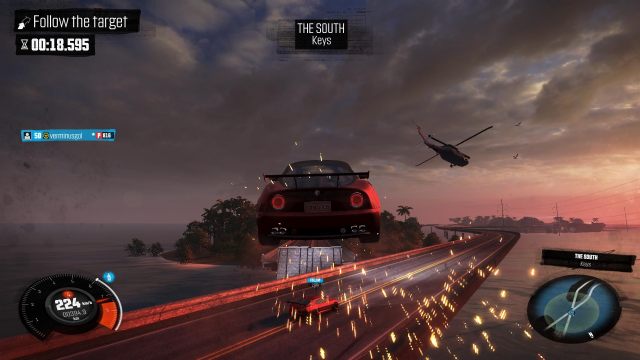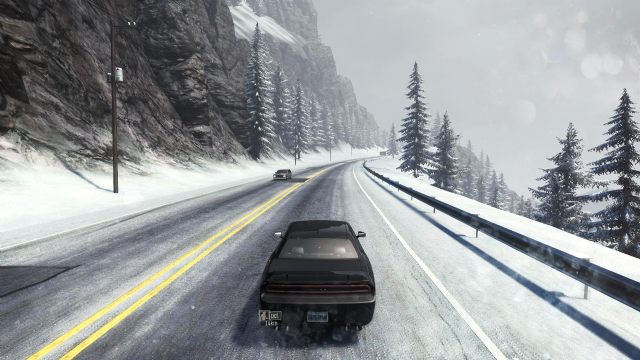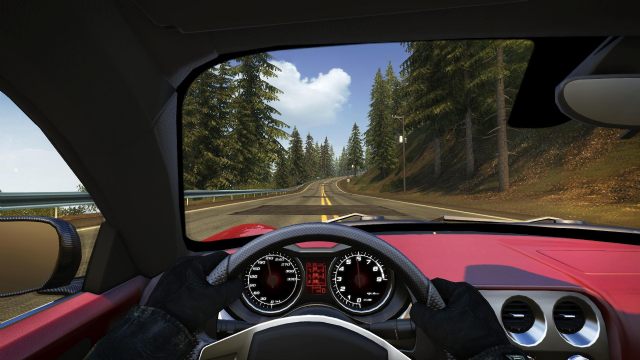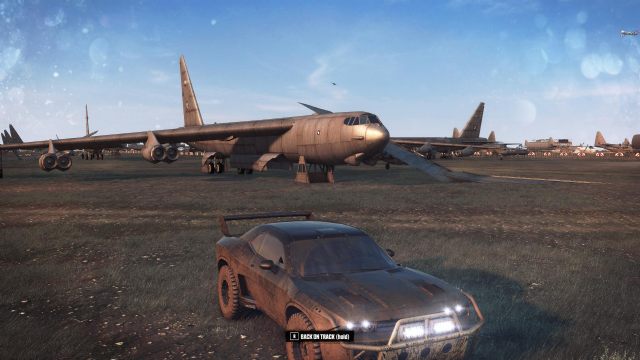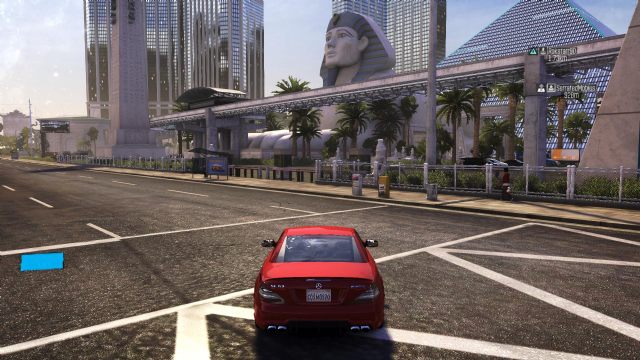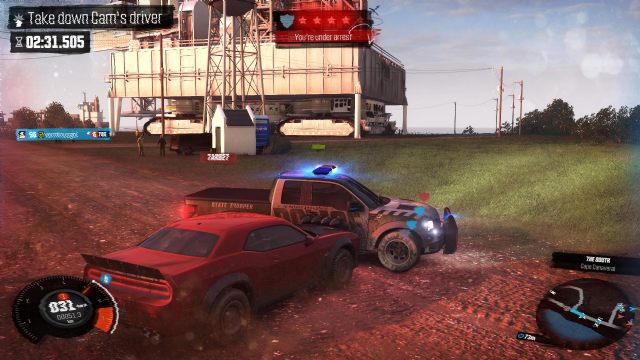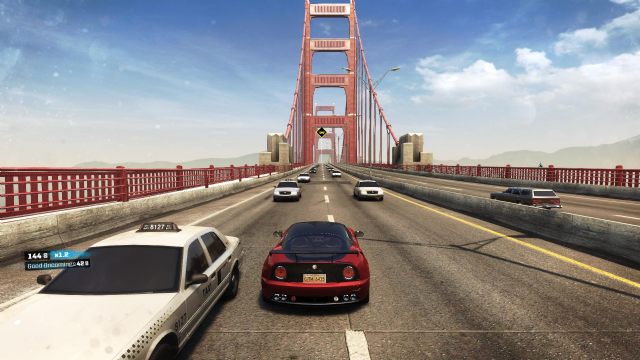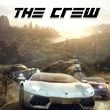The Crew Review: Test Drive Unlimited in USA
After six years of hard work, the team behind Test Drive Unlimited has crafted a similar product for Ubisoft. A few dozen of cars, the vast United States and the titular ‘crew’ on the road. How did it all turn out?
The review is based on the PC version.
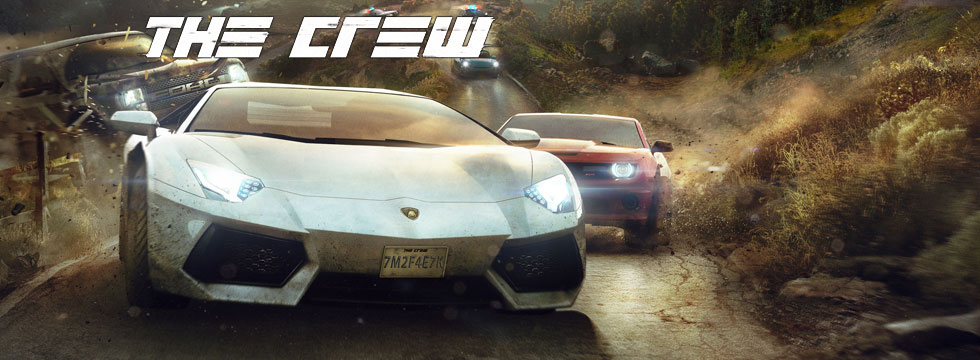
- A revelational and diverse map of the USA filled with numerous locations;
- A magnitude of things to do and discover;
- The feeling of traveling through America;
- An accessible driving model – even on the keyboard;
- Great optimization;
- Social functions.
- Expensive cars and microtransactions;
- A small amount of cars;
- An underwhelming plot;
- Few tuning opportunities;
- A lack of dynamic weather.
‘Yeah, uh! Get up now! Ow! Knock out this! Super highways, coast to coast, easy to get anywhere. On the transcontinental overload, just slide behind the wheel. How does it feel’, Although James Brown’s classic can’t be heard in the game, it is hard to find a different song that sums up what The Crew is all about – driving in the United States. The American atmosphere resides in every mile of the enormous virtual United States we traverse. The game map’s greatness of scope and variety sometimes even manage to overshadow the driving, the cars and the tuning themselves. It’s obvious that the map was the apple of Ivory Tower’s eye – the developer previously known for Test Drive Unlimited. The Crew, which was in development for nearly 6 years, was to be the soul successor of TDU, but greater, better and more interesting in every aspect. That ambition gave us some pretty good results.
The game doesn’t reveal all of its’ world right of the bat. To access the gameworld in which We can drive nearly everywhere, unless there are vertical rocks and water present, we must first get to know our protagonist – Alex Taylor, and his motives for racing through and through the States. The plot is unapologetically cliché, as if copied straight from a Fast & Furious movie. Our poor Alex is framed for murder, seeks vengeance and tries to absolve himself from guilt as an undercover FBI agent, who must blend into a gang of street racers called simply ‘5-10’. None of the plot twists or dialogues will swipe us of our feet, but it is a good thing that the developers have decided on such a form – it is a much more interesting solution, than driving for the sake of it (and improving our stats). Cutscenes comprise the same, quite exceptional graphic style, we know and love from Driver: San Francisco, and the voice actors manage a standard performance. Meanwhile, the missions themselves are diverse, due to direct references to transpiring events, like tailing a certain car or ramming someone of the road.
When we finally get through the first races and the cutscenes, the entirety of the United States divided into five regions lays at our disposal. We can travel anywhere we desire, but certain challenges are unlocked gradually, upon completing a previous feat or achieving a high enough driver level. Amongst the seven mission types we will find both easy and straight-forward modes: races, driving through control points, running away from the police and the hellishly annoying ramming of opponent vehicles. Despite those activities interlacing throughout the entire game – not once do we get a feeling of dullness and repetitiveness. All owing to the developer’s splendid execution and use of the variety of the areas scattered across the map, along with a few spectacular scripts. We will get to race on the Laguna Seca track, busy streets, amongst the majestic redwoods, desert wastelands, swamps crawling with alligators, mountain serpentines – the unique locations seem to have no end. While racing at the airport, we will be distracted by arriving and departing aircrafts, in the mines we will be interrupted by dump trucks and cranes, and in the city we will have to watch out for, let’s say, a tanker that is just backing up. Almost always there is some distraction from the road ahead.
Appearing every step (or mile) skill tests such us slaloms, driving across a line, or through gates are more monotonous – they are however worth completing, as thanks to them we unlock components to improve our machines. A huge chunk of on-map activities is made up of numerous collectibles, in form of characteristic locations, wrecks of unique cars (just like in Test Drive Unlimited 2), unlockable ‘observatory antennas’ (in the fashion of Far Cry or Assassin’s Creed), and much of the social network functionality, that the developers have focused on. To our completion are left several daily, weekly and monthly challenges, and faction missions that can take up to two hours (or more). The icing on the cake becomes, the much greatly awarded, completing of tasks and almost every mission available in multiplayer, both in co-op, and competitive. Although here, the topical for many racing games schematic prevails – it is best to race with Your friends with voice communication on. That way, we can truly form the titular ‘Crew’, as the game doesn’t pair us with random companions regardless of their cars – we can either play with someone much faster, or slower than us. At those times, when in co-op missions, we will either be constantly in the lead, or way behind our friends. Up to eight players can be on the map at the same time.
The enormity of challenges requires the proper tools. In this aspect The Crew disappoints a little, as there are clearly too few vehicles. The virtual car shops offer about 40 cars. American brands are the dominating ones: Ford, Dodge, Chrysler, Chevrolet – both new and classic muscle cars. Apart from that we are treated the standard German ones: Golf, BMW M5, Mercedes SLS, SL, and a few Italian super cars: Lamborghini, LaFerrari, Pagani. The developers don’t seem to mind the amount, as most of the cars can be redone for certain tracks such as: off-road, street, racing track – that way they gain a little bit modified, tuned up, look, but that doesn’t change the fact that it is still the same model. It is worth mentioning, that despite the purely agile driving module, the cars are driven differently – off-road cars are slow and logy, classic muscle cars don’t fancy turning, and GT cars stick closely to the asphalt.
The way each machine runs changes with time, when We successively add modified parts, but the tuning in The Crew doesn’t even come close to the one in Need For Speed: Underground 2. First and foremost – the unlocked elements are installed automatically, practically resulting in us not feeling the improvement of the machine – it’s too fluid and quick. Tuning shops in the cities are essentially selling us sets upgrading to a different class, or equip the unlocked parts to a new bought car, which sadly doesn’t happen that often. The possibilities of 'pimping our ride’ are minimal: rims, bumpers, threshold, spoiler – all in small quantity and variety. On the plus side, a praise-worthy feature is the chance to change the color of our upholstering and the dashboard. The essence of tuning in the game seems to be the full makeover, changing the car type, and giving it a more rugged look – with higher suspension, wider fenders and a row of lamps on the hood. It is hard to get the feeling of most of the perks actually working, with perks unlocked by bonus points. Most of them barely give us a few percent discount at the shop, or a similar small bonus to braking or acceleration.
The car handling is typical arcade-style, and it’s hard to find any traces of a more simulation-focused one, but it’s not like car handling resembles driving a hovercraft. The Crew is somewhere in between Forza Horizon and Need for Speed. The driving model is quite enjoyable even on a keyboard, but without a doubt, to get the ultimate precision and enjoyment, one should consider plugging up a controller or a steering wheel. It does require some time though – it takes a while to adjust the many available sensitivity sliders and dead zones, but using the steering wheel is truly entertaining, especially in free-roaming and taking on the perspective from the cockpit. Differences between driving with the available handicap, in a ‘sport’ mode or ‘hardcore’ comes down to weaker handling of the back of the car, in those that have a tendency to – like muscle cars.
The missions and races themselves are very dynamic and often full of chaos - owing to random crashes with random cars in the traffic in the more dense cities. The AI on the other hand, is quite movie-like - often our opponents will be unreachable in the beginning, only to slow down for us to catch up and play out a climatic ending. Although it also works the other way around, when we are in the lead - even a few seconds worth of delay is sure to work in the enemies favour. Especially frustrating are the missions in which we have to ram into our opponents - usually repeating them we have to test out our enemy, to find a weaker turn, making us an easy target, or we have to pray we get lucky. Luckily for the AI, this works out quite well, as when we get rammed, or drop out of the track, we don't have to repeat the entire race. Often we have a chance to prevail. The destruction system is best witnessed during long faction missions, but it's basically cosmetic - our ride quickly repairs itself. A destruction system has minor influence on our performance (if any at all) despite what the booklet might suggest.
The Crew’s graphics are decent enough not to awe us in any particular way. The game certainly doesn't hold up to what we have seen in DriveClub or Forza Motorsport 2. All due to the fact that the titular crew doesn't aim for photorealism - it looks just like a video game. The textures aren't top notch, some things are too glossy, cars in traffic are simple-looking. Luckily, the game is detailed enough to produce a believable virtual America. Our cars look exceptionally well, cockpits are detailed, the car body gets dirty in a realistic fashion when we go off-road. We can marvel at our cars in our garage, but a picture mode known from other games is surprisingly absent. Great care was put into bringing forestry to life - leaf-covered branches dance in the wind, tall grass looks like someone might have lost their keys in there and the prairie looks inviting. Much effort was put into making each region and city feel distinct with its own look and style. The transitions in the scenery, like from autumn forests of Washington to the palm-filled coast of Florida are seamless and barely visible. It is also worth mentioning that The Crew can be played on older PC’s, even with dual-cores.
The sound design maintains the same level. All seems to be just 'OK' with a wow factor hardly present. A few radio stations with a wide repertoire to choose from are present (from classical music, relaxation beats, hip hop, rock to known second class tracks), however, tracks that would fit traveling through hundreds of miles, or an option to play one's own music are absent. The engines sounds are diverse, but definitely too quiet and unremarkable - they get lost somewhere in the midst of dialogues, the sounds of the police radio and the soundtrack. The original soundtrack is exceptionally good, when accompanying in races - its dramatic, exciting, and makes races more epic.
The greatest flaw of the Crew is the game's economy - in form of the in-game currency called simply Bucks, and alongside it, the plight of our times - micro transactions. The game isn’t too generous with awarding us for all of the stunts on the road and main missions. We might earn a bit more in multiplayer and some for the faction missions - those however aren't as numerous as one would hope and often take up more than two hours. A low income doesn't stop us from completing the game or advancing - it will however result in our garage leaving much to be desired. We won't be awarded for progress with any additional cars (apart from the one awarded to us for achievements) and the prices of the better machines make us drive quite a lot and save up diligently. One could also resolve to using a credit card and buying ‘Crew Credits’. This currency, available thanks to real money, let's us buy cars and tuning parts. Unluckily for us, some sticker prices can reach the price of two Ford Focus cars. It quickly becomes obvious, that the economy was planned strictly for those impatient gamers who want a Ferrari or a Koenigsegg for a million bucks, to reach for their credit cards. When it comes to Crews shortcomings, one cannot forget the over saturation of information - our HUD is simply bombarded with various notifications, often completely obstructing the view. Luckily, most of those things can be turned off in the options menu.
Apart from that, the game suffers from pre-mature illnesses and glitches typical for an online mode in racing games. Once in a while a car will shoot out somewhere in a uninhibited manner, hit a pedestrian head-on, as if he or she was a metal pole. It is also possible that there won’t be any other players on our map in a session, eventually there might be one or two, the servers manage to go down every once in a while, and in that case, we lose the session that is currently being completed (even if playing alone – The Crew requires to be always online). Those cases are however few and far between, and don’t spoil the overall satisfaction from playing the game.
The Crew can be summed up in a single sentence: it is rich, filled to the brim with content and things to do – and pretty like Forza Horizon 2! The weaker graphics probably are a result of the fact that the game’s development started in 2008. It may as well be the price we have to pay for such a vast and open world, full of big, lively cities and dense forestry in between. The Crew doesn’t topple the competition in all of the aspects, but in the end, it is Ubisoft’s game that gives us the most fun from ‘driving for the sake of it’. That fun comes at the price of a small amount of car available, that even a worst salesman wouldn’t sale at that price. Never do we witness dynamic changes in the weather, neither will we marvel at the graphics, like in Forza. But we get an uncanny atmosphere of traveling across the American highways, many things to discover and a lot of excitement from multiplayer. Despite its’ flaws – The Crew can rightfully take its’ place amongst the likes of Need for Speed, Forza Motorsport or Burnout, as a new solid and fulfilling franchise.
The Crew
After six years of hard work, the team behind Test Drive Unlimited has crafted a similar product for Ubisoft. A few dozen of cars, the vast United States and the titular ‘crew’ on the road. How did it all turn out?
